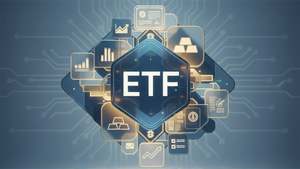
SAN JOSE, CA – October 14, 2025 – Navitas Semiconductor (NASDAQ: NVTS) witnessed an unprecedented surge in its stock value yesterday, climbing over 27% in a single day, following the announcement of significant progress in its partnership with AI giant Nvidia (NASDAQ: NVDA). The deal positions Navitas as a critical enabler for Nvidia's next-generation 800 VDC AI architecture systems, a development set to revolutionize power delivery in the rapidly expanding "AI factory" era. This collaboration not only validates Navitas's advanced Gallium Nitride (GaN) and Silicon Carbide (SiC) power semiconductor technologies but also signals a fundamental shift in how the industry will power the insatiable demands of future AI workloads.
The strategic alliance underscores a pivotal moment for both companies. For Navitas, it signifies a major expansion beyond its traditional consumer fast charger market, cementing its role in high-growth, high-performance computing. For Nvidia, it secures a crucial component in its quest to build the most efficient and powerful AI infrastructure, ensuring its cutting-edge GPUs can operate at peak performance within demanding multi-megawatt data centers. The market's enthusiastic reaction reflects the profound implications this partnership holds for the efficiency, scalability, and sustainability of the global AI chip ecosystem.
Engineering the Future of AI Power: Navitas's Role in Nvidia's 800 VDC Architecture
The technical cornerstone of this partnership lies in Navitas Semiconductor's (NASDAQ: NVTS) advanced wide-bandgap (WBG) power semiconductors, specifically tailored to meet the rigorous demands of Nvidia's (NASDAQ: NVDA) groundbreaking 800 VDC AI architecture. Announced on October 13, 2025, this development builds upon Navitas's earlier disclosure on May 21, 2025, regarding its commitment to supporting Nvidia's Kyber rack-scale systems. The transition to 800 VDC is not merely an incremental upgrade but a transformative leap designed to overcome the limitations of legacy 54V architectures, which are increasingly inadequate for the multi-megawatt rack densities of modern AI factories.
Navitas is leveraging its expertise in both GaNFast gallium nitride and GeneSiC
gallium nitride and GeneSiC silicon carbide technologies. For the critical lower-voltage DC-DC stages on GPU power boards, Navitas has introduced a new portfolio of 100 V GaN FETs. These components are engineered for ultra-high density and precise thermal management, crucial for the compact and power-intensive environments of next-generation AI compute platforms. These GaN FETs are fabricated using a 200mm GaN-on-Si process, a testament to Navitas's manufacturing prowess. Complementing these, Navitas is also providing 650V GaN and high-voltage SiC devices, which manage various power conversion stages throughout the data center, from the utility grid all the way to the GPU. The company's GeneSiC technology, boasting over two decades of innovation, offers robust voltage ranges from 650V to an impressive 6,500V.
silicon carbide technologies. For the critical lower-voltage DC-DC stages on GPU power boards, Navitas has introduced a new portfolio of 100 V GaN FETs. These components are engineered for ultra-high density and precise thermal management, crucial for the compact and power-intensive environments of next-generation AI compute platforms. These GaN FETs are fabricated using a 200mm GaN-on-Si process, a testament to Navitas's manufacturing prowess. Complementing these, Navitas is also providing 650V GaN and high-voltage SiC devices, which manage various power conversion stages throughout the data center, from the utility grid all the way to the GPU. The company's GeneSiC technology, boasting over two decades of innovation, offers robust voltage ranges from 650V to an impressive 6,500V.
What sets Navitas's approach apart is its integration of advanced features like GaNSafe power ICs, which incorporate control, drive, sensing, and critical protection mechanisms to ensure unparalleled reliability and robustness. Furthermore, the innovative "IntelliWeave
power ICs, which incorporate control, drive, sensing, and critical protection mechanisms to ensure unparalleled reliability and robustness. Furthermore, the innovative "IntelliWeave " digital control technique, when combined with high-power GaNSafe and Gen 3-Fast SiC MOSFETs, enables power factor correction (PFC) peak efficiencies of up to 99.3%, slashing power losses by 30% compared to existing solutions. This level of efficiency is paramount for AI data centers, where every percentage point of power saved translates into significant operational cost reductions and environmental benefits. The 800 VDC architecture itself allows for direct conversion from 13.8 kVAC utility power, streamlining the power train, reducing resistive losses, and potentially improving end-to-end efficiency by up to 5% over current 54V systems, while also significantly reducing copper usage by up to 45% for a 1MW rack.
" digital control technique, when combined with high-power GaNSafe and Gen 3-Fast SiC MOSFETs, enables power factor correction (PFC) peak efficiencies of up to 99.3%, slashing power losses by 30% compared to existing solutions. This level of efficiency is paramount for AI data centers, where every percentage point of power saved translates into significant operational cost reductions and environmental benefits. The 800 VDC architecture itself allows for direct conversion from 13.8 kVAC utility power, streamlining the power train, reducing resistive losses, and potentially improving end-to-end efficiency by up to 5% over current 54V systems, while also significantly reducing copper usage by up to 45% for a 1MW rack.
Reshaping the AI Chip Market: Competitive Implications and Strategic Advantages
This landmark partnership between Navitas Semiconductor (NASDAQ: NVTS) and Nvidia (NASDAQ: NVDA) is poised to send ripples across the AI chip market, redefining competitive landscapes and solidifying strategic advantages for both companies. For Navitas, the deal represents a profound validation of its wide-bandgap (GaN and SiC) technologies, catapulting it into the lucrative and rapidly expanding AI data center infrastructure market. The immediate stock surge, with NVTS shares climbing over 21% on October 13 and extending gains by an additional 30% in after-hours trading, underscores the market's recognition of this strategic pivot. Navitas is now repositioning its business strategy to focus heavily on AI data centers, targeting a substantial $2.6 billion market by 2030, a significant departure from its historical focus on consumer electronics.
For Nvidia, the collaboration is equally critical. As the undisputed leader in AI GPUs, Nvidia's ability to maintain its edge hinges on continuous innovation in performance and, crucially, power efficiency. Navitas's advanced GaN and SiC solutions are indispensable for Nvidia to achieve the unprecedented power demands and optimal efficiency required for its next-generation AI computing platforms, such such as the NVIDIA Rubin Ultra and Kyber rack architecture. By partnering with Navitas, Nvidia ensures it has access to the most advanced power delivery solutions, enabling its GPUs to operate at peak performance within its demanding "AI factories." This strategic move helps Nvidia drive the transformation in AI infrastructure, maintaining its competitive lead against rivals like AMD (NASDAQ: AMD) and Intel (NASDAQ: INTC) in the high-stakes AI accelerator market.
The implications extend beyond the immediate partners. This architectural shift to 800 VDC, spearheaded by Nvidia and enabled by Navitas, will likely compel other power semiconductor providers to accelerate their own wide-bandgap technology development. Companies reliant on traditional silicon-based power solutions may find themselves at a competitive disadvantage as the industry moves towards higher efficiency and density. This development also highlights the increasing interdependency between AI chip designers and specialized power component manufacturers, suggesting that similar strategic partnerships may become more common as AI systems continue to push the boundaries of power consumption and thermal management. Furthermore, the reduced copper usage and improved efficiency offered by 800 VDC could lead to significant cost savings for hyperscale data center operators and cloud providers, potentially influencing their choice of AI infrastructure.
A New Dawn for Data Centers: Wider Significance in the AI Landscape
The collaboration between Navitas Semiconductor (NASDAQ: NVTS) and Nvidia (NASDAQ: NVDA) to drive the 800 VDC AI architecture is more than just a business deal; it signifies a fundamental paradigm shift within the broader AI landscape and data center infrastructure. This move directly addresses one of the most pressing challenges facing the "AI factory" era: the escalating power demands of AI workloads. As AI compute platforms push rack densities beyond 300 kilowatts, with projections of exceeding 1 megawatt per rack in the near future, traditional 54V power distribution systems are simply unsustainable. The 800 VDC architecture represents a "transformational rather than evolutionary" step, as articulated by Navitas's CEO, marking a critical milestone in the pursuit of scalable and sustainable AI.
This development fits squarely into the overarching trend of optimizing every layer of the AI stack for efficiency and performance. While much attention is often paid to the AI chips themselves, the power delivery infrastructure is an equally critical, yet often overlooked, component. Inefficient power conversion not only wastes energy but also generates significant heat, adding to cooling costs and limiting overall system density. By adopting 800 VDC, the industry is moving towards a streamlined power train that reduces resistive losses and maximizes energy efficiency by up to 5% compared to current 54V systems. This has profound impacts on the total cost of ownership for AI data centers, making large-scale AI deployments more economically viable and environmentally responsible.
Potential concerns, however, include the significant investment required for data centers to transition to this new architecture. While the long-term benefits are clear, the initial overhaul of existing infrastructure could be a hurdle for some operators. Nevertheless, the benefits of improved reliability, reduced copper usage (up to 45% for a 1MW rack), and maximized white space for revenue-generating compute are compelling. This architectural shift can be compared to previous AI milestones such as the widespread adoption of GPUs for general-purpose computing, or the development of specialized AI accelerators. Just as those advancements enabled new levels of computational power, the 800 VDC architecture will enable unprecedented levels of power density and efficiency, unlocking the next generation of AI capabilities. It underscores that innovation in AI is not solely about algorithms or chip design, but also about the foundational infrastructure that powers them.
The Road Ahead: Future Developments and AI's Power Frontier
The groundbreaking partnership between Navitas Semiconductor (NASDAQ: NVTS) and Nvidia (NASDAQ: NVDA) heralds a new era for AI infrastructure, with significant developments expected on the horizon. The transition to the 800 VDC architecture, which Nvidia (NASDAQ: NVDA) is leading and anticipates commencing in 2027, will be a gradual but impactful shift across the data center electrical ecosystem. Near-term developments will likely focus on the widespread adoption and integration of Navitas's GaN and SiC power devices into Nvidia's AI factory computing platforms, including the NVIDIA Rubin Ultra. This will involve rigorous testing and optimization to ensure seamless operation and maximal efficiency in real-world, high-density AI environments.
Looking further ahead, the potential applications and use cases are vast. The ability to efficiently power multi-megawatt IT racks will unlock new possibilities for hyperscale AI model training, complex scientific simulations, and the deployment of increasingly sophisticated AI services. We can expect to see data centers designed from the ground up to leverage 800 VDC, enabling unprecedented computational density and reducing the physical footprint required for massive AI operations. This could lead to more localized AI factories, closer to data sources, or more compact, powerful edge AI deployments. Experts predict that this fundamental architectural change will become the industry standard for high-performance AI computing, pushing traditional 54V systems into obsolescence for demanding AI workloads.
However, challenges remain. The industry will need to address standardization across various components of the 800 VDC ecosystem, ensuring interoperability and ease of deployment. Supply chain robustness for wide-bandgap semiconductors will also be crucial, as demand for GaN and SiC devices is expected to skyrocket. Furthermore, the thermal management of these ultra-dense racks, even with improved power efficiency, will continue to be a significant engineering challenge, requiring innovative cooling solutions. What experts predict will happen next is a rapid acceleration in the development and deployment of 800 VDC compatible power supplies, server racks, and related infrastructure, with a strong focus on maximizing every watt of power to fuel the next wave of AI innovation.
Powering the Future: A Comprehensive Wrap-Up of AI's New Energy Backbone
The stock surge experienced by Navitas Semiconductor (NASDAQ: NVTS) following its deal to supply power semiconductors for Nvidia's (NASDAQ: NVDA) 800 VDC AI architecture system marks a pivotal moment in the evolution of artificial intelligence infrastructure. The key takeaway is the undeniable shift towards higher voltage, more efficient power delivery systems, driven by the insatiable power demands of modern AI. Navitas's advanced GaN and SiC technologies are not just components; they are the essential backbone enabling Nvidia's vision of ultra-efficient, multi-megawatt AI factories. This partnership validates Navitas's strategic pivot into the high-growth AI data center market and secures Nvidia's leadership in providing the most powerful and efficient AI computing platforms.
This development's significance in AI history cannot be overstated. It represents a fundamental architectural change in how AI data centers will be designed and operated, moving beyond the limitations of legacy power systems. By significantly improving power efficiency, reducing resistive losses, and enabling unprecedented power densities, the 800 VDC architecture will directly facilitate the training of larger, more complex AI models and the deployment of more sophisticated AI services. It highlights that innovation in AI is not confined to algorithms or processors but extends to every layer of the technology stack, particularly the often-underestimated power delivery system. This move will have lasting impacts on operational costs, environmental sustainability, and the sheer computational scale achievable for AI.
In the coming weeks and months, industry observers should watch for further announcements regarding the adoption of 800 VDC by other major players in the data center and AI ecosystem. Pay close attention to Navitas's continued expansion into the AI market and its financial performance as it solidifies its position as a critical power semiconductor provider. Similarly, monitor Nvidia's progress in deploying its 800 VDC-enabled AI factories and how this translates into enhanced performance and efficiency for its AI customers. This partnership is a clear indicator that the race for AI dominance is now as much about efficient power as it is about raw processing power.
This content is intended for informational purposes only and represents analysis of current AI developments.
TokenRing AI delivers enterprise-grade solutions for multi-agent AI workflow orchestration, AI-powered development tools, and seamless remote collaboration platforms.
For more information, visit https://www.tokenring.ai/.



